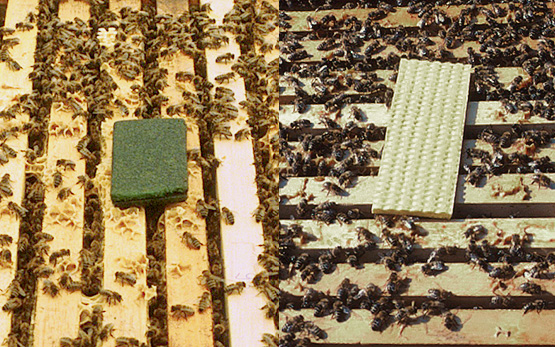Royet K., Kergoat L., Lutz S., Oriol C., Parisot N., Schori C., Ahrens C., Rodrigue A., Gueguen E.
High-throughput Tn-seq screens identify both known and novel pseudomonas putida KT2440 genes involved in metal tolerance.
Environmental Microbiology, 27, 2025, Article e70095.
Thoenen L., Giroud C., Kreuzer M., Waelchli J., Gfeller V., Deslandes-Hérold G., Mateo P., Robert C.A.M., Ahrens C., Rubio-Somoza I., Bruggmann R., Erb M., Schläppi K.
Bacterial tolerance to host-exuded specialized metabolites structures the maize root microbiome.
Proceedings of the National Academy of Sciences, 120, (44), 2023, 1-11.
Valentin J.D.P., Altenried S., Varadarajan A.R., Ahrens C., Schreiber F., Webb J.S., van der Mei H.C., Ren Q.
Identification of potential antimicrobial targets of pseudomonas aeruginosa biofilms through a novel screening approach.
Microbiology Spectrum, 11, (2), 2023, 1-5.
Bonilla Rosso G., Segessemann T., Heiniger B., Ahrens C.
Microbial Genomics & Bioinformatics Team: Overview of core competences.
Dans: Summer Party & Exchange Meeting. 2. August, Posieux. 2023, 1.
Stucky T., Hochstrasser M., Meyer S., Segessemann T., Ruthes A. C., Ahrens C., Dahlin P., Pelludat C.
Screening-Test für bakterielle Antagonisten des südlichen Wurzelgallennematoden.
Agrarforschung Schweiz, 14, 2023, 229-235.
Romanò A., Ivanovic I., Segessemann T., Vazquez Rojo L., Widmer J., Egger C., Dreier M., Sesso L., Vaccani M., Schuler M., Frei D., Frey J., Ahrens C., Steiner A., Graber H. U.
Elucidation of the bovine intramammary bacteriome and resistome from healthy cows of Swiss dairy farms in the Canton Tessin.
Frontiers in Microbiology, 14, 2023, 1-25.
Stucky T., Hochstrasser M., Meyer S., Segessemann T., Ruthes A. C., Ahrens C., Pelludat C., Dahlin P.
A novel robust screening assay identifies pseudomonas strains as reliable antagonists of the root-knot nematode Meloidogyne incognita.
Microorganisms, 11, (8), 2023, 1-16.
Meier-Credo J., Heiniger B., Schori C., Rupprecht F., Michel H., Ahrens C., Langer J. D.
Detection of known and novel small proteins in pseudomonas stutzeri using a combination of bottom-up and digest-free proteomics and proteogenomics.
Analytical Chemistry, 95, (32), 2023, 11892-11900.
Hug S., Heiniger B., Bolli K., Paszti S., Eberl L., Ahrens C., Pessi G.
Paraburkholderia sabiae uses one type VI secretion system (T6SS-1) as a powerful weapon against notorious plant pathogens.
Microbiology Spectrum, 11, (4), 2023, 1-14.
Nägeli L., Schuler M., Segessemann T., Frei D., Frey J., Ahrens C., Wolfe K., Freimoser F.
Genome sequence data of the strongly antagonistic yeast Pichia kluyveri isolate APC 11.10 B as a foundation for analysing biocontrol mechanisms.
Data in Brief, 49, 2023, 1-7.
Rueda-Mejia M. P., Bühlmann A., Ortiz-Merino R. A., Lutz S., Ahrens C., Künzler M., Freimoser F.
Pantothenate auxotrophy in a naturally occurring biocontrol yeast.
Applied and Environmental Microbiology, 89, (7), 2023, 1-13.
Hadjeras L., Heiniger B., Maass S., Scheuer R., Gelhausen R., Azarderakhsh S., Barth-Weber S., Backofen R., Becher D., Ahrens C., Sharma C.M., Evguenieva-Hackenberg E.
Unraveling the small proteome of the plant symbiont Sinorhizobium meliloti by ribosome profiling and proteogenomics.
microLife, 4, 2023, 1-22.
Bellés-Sancho P., Liu Y., Heiniger B., von Salis E., Eberl L., Ahrens C., Zamboni N., Bailly A., Pessi G.
A novel function of the key nitrogen-fixation activator NifA in beta-rhizobia: Repression of bacterial auxin synthesis during symbiosis.
Frontiers in Plant Science, online, (28 September), 2022, 1-20.
Riesbeck S., Petruschke H., Rolle-Kampczyk U., Schori C., Ahrens C. H., Eberlein C., Heipieper H. J., von Bergen M., Jehmlich N.
Adaptation and Resistance: How Bacteroides thetaiotaomicron Copes with the Bisphenol A Substitute Bisphenol F.
Microorganisms, 10, (8), 2022, 1-16.
Wülser J., Ernst C., Vetsch D., Emmenegger B., Michel A., Lutz S., Ahrens C., Vorholt J., Ledermann R., Fischer H.-M.
Salt- and osmo-responsive sensor histidine kinases activate the Bradyrhizobium diazoefficiens general stress response to initiate functional symbiosis.
Molecular Plant-Microbe Interactions, 35, (7), 2022, 604-615.
Valentin J.D.P., Straub H., Pietsch F., Lemare M., Ahrens C., Schreiber F., Webb J.S., van der Mei H.C., Ren Q.
Role of the flagellar hook in the structural development and antibiotic tolerance of Pseudomonas aeruginosa biofilms.
The ISME Journal, 16, (4), 2022, 1176-1186.
Ahrens C., Wade J.T., Champion M.M., Langer J.D.
A practical guide to small protein discovery and characterization using mass spectrometry.
Journal of Bacteriology, 204, (1), 2022, e0035321.
Rueda Mejia M. P., Nägeli L., Lutz S., Ortiz-Merino R. A., Frei D., Frey J. E., Wolfe K. H., Ahrens C., Freimoser F.
Genome sequence data of the antagonistic soil-borne yeast Cyberlindnera sargentensis (SHA 17.2).
Data in Brief, 40, (February), 2022, 1-6.
Mayerhofer J., Thuerig B., Oberhaensli T., Enderle E., Lutz S., Ahrens C., Fuchs J. G., Widmer F.
Indicative bacterial communities and taxa of disease-suppressing and growth-promoting composts and their associations to the rhizoplane.
FEMS Microbiology Ecology, 97, (10), 2021, Article fiab134.
Rueda Mejia M. P., Nägeli L., Lutz S., Hayes R.D., Varadarajan A. R., Grigoriev I. V., Ahrens C., Freimoser F.
Genome, transcriptome and secretome analyses of the antagonistic, yeast-like fungus Aureobasidium pullulans to identify potential biocontrol genes.
Microbial Cell, 8, (8), 2021, 184-202.







